Old Fashioned Car Popular 1960's Cars
For July's issue, we assembled the nigh important cars always built, working forward from 1955, when we were founded as Sports Car Illustrated, and the modernistic auto industry came of age. These are Automobile and Driver's GOATS – the Greatest of All Time. Today: The Sixties.
1960 Austin Mini
"I've always felt that stylists such as you have in America are ashamed of a car and are preoccupied with making it look similar something else, similar a submarine or an airship," Alec Issigonis told the New York Times in 1964 virtually his design for the Mini. "Equally an engineer, I revolt against this."
The 1960 Mini (originally called the 850 in the U.Southward.) was practical logic from an unconventional mind. To maximize interior space in a car that was only 10 anxiety long, Issigonis placed the 848-cc inline-4 sideways with a four-speed manual in its sump. A unibody eliminated the need for a separate frame, with the light body suspended by rubber-cone springs over dinky 10-inch wheels. Information technology was dissimilar anything else at the time and remarkably similar to today's cars and crossovers—conceptually, non dimensionally.
Then the Mini went racing and kicked ass. In tweaked Cooper Due south form, information technology won the Monte Carlo rally in 1964, 1965, and 1967. (It was robbed in 1966 when the Minis that finished in the elevation three spots were butterfingers for noncompliant headlights.) Through the years, Minis accept competed in merely most every motorsport, except motocross and hydroplanes, and they now clog the grids at vintage races. Sold by Austin, Innocenti, BMC/British Leyland, Morris, Riley, and Wolseley, more than five million Minis were built before production stopped in 2000. —John Pearley Huffman
Values, market analysis, sale results, and more on the Classic Mini at Bring a Trailer.*
1961 Jaguar XK-East
The XK-E is the marquee dream automobile of its era because information technology'southward beautiful, just its dazzler was incidental to its low-drag, high-speed role. The shape was penned by Jaguar aerodynamicist Malcolm Sayer. That hit body was draped over race-proven hardware that was ahead of its fourth dimension in many means, such that it'southward hard to believe this alleged 150-mph car is now nearly 60 years old. The husky burr from the DOHC inline-6 no dubiety influenced the great naturally aspirated BMW sixes, and its 265 horsepower is plenty to brand yous glad for the confident bite of the four-cycle disc brakes (located inboard at the rear). The cabin, all needles and dials and toggle switches, exudes timeless absurd. When it was new, we tested the E-type with a 2200-mile trip from New York to Detroit and dorsum. Nosotros'd jump at the chance to exercise that once again. —Ezra Dyer
Values, marketplace analysis, auction results, and more than on the Jaguar XKE Series I at Bring a Trailer.
1963 Chevrolet Corvette Sting Ray
Imagine a rear-bulldoze sports motorcar powered by a loftier-revving 300-plus-hp 5-eight, riding on a sophisticated contained suspension, and dressed in a stunning body made from a lightweight material. If that sounds like a cool car today, imagine information technology on the road 57 years ago. That was the 1963 Corvette Sting Ray.
American cars of the early 1960s were lumbering, chrome-encrusted behemoths. The 1963 Sting Ray, the first of the second-generation (C2) Chevy two-seaters, was shockingly cute, lithe, nimble, and, of course, blindingly fast. The handiwork of engineer-racer Zora Arkus-Duntov and GM'southward flamboyant design czar, Bill Mitchell, the C2 was available as either a coupe or a convertible and wore feathery fiberglass body panels virtually gratis of chrome trim. In '63, acme models came with a fuel-injected 327-cubic-inch small-block V-8 rated at 360 horsepower. With performance and handling that rivaled a Ferrari's, the C2 left its crude predecessor gasping. And it did and so at a toll that immune average Americans to actually own ane.
Audio familiar? The C2 established the price-value formula that Corvettes accept followed ever since. Information technology ran through the 1967 model twelvemonth, but the C2'southward greatness has lasted to the nowadays, enshrined in its collectibility: Concours-condition models tin trade hands for hundreds of thousands of dollars. —Rich Ceppos
Values, market analysis, auction results, and more on the Corvette C2 at Bring a Trailer.
1964 Pontiac GTO
The GTO was so Goat, people actually chosen information technology "the caprine animal" even though the right letters are only three-quarters present and in the incorrect order. That'due south how inspirational information technology was. Historians, drunken pedants, and other contrarians will point out that the GTO was not the first awarding of the large-engine-in-mid-size-motorcar formula, and they are—well, they're right. Merely who cares? It's not some laudable intellectual feat to take decades of historical perspective and make the observation Car and Driver did on our first encounter with the car.
"It was a shade over 10 years ago that events in Detroit took a plough for the better and started the tendency that ultimately resulted in the Tempest GTO," we wrote in March 1964. "From those humble beginnings . . . came a host of better, more than interesting cars from Detroit." It's not that the Oldsmobile Rocket 88 was besides early, or that the Chrysler C-300 didn't burrow into the zeitgeist every bit readily every bit the GTO; they were steps along the style, helping to ripen 1964 as The Moment for the muscle motorcar.
The finishing touch was the audacity of those three letters on this auto, or more than probable, it was the audacious fashion the Tempest GTO delivered on that apparent overpromise. Yep, information technology was quick, but it stopped and handled, also. We chosen information technology "the best American car we accept ever driven, and probably one of the five or six best cars in the world for the enthusiast driver." In case readers didn't take that seriously, nosotros included this appraisal: "Our test car, with stock suspension, metallic brakes, and equally-tested 348-hp engine, will lap whatever U.S. road form faster than any Ferrari street machine." And when we called it a deal, we emphasized the word with italics. The competition emphasized the GTO's significance with an explosion of similar cars that consumed the national conscience for a decade. Information technology took the triple hit of emissions controls, an oil embargo, and an manufacture-broad rethink of insurance standards to finally slow the trend. —Jared Gall
Values, marketplace assay, auction results, and more on the Pontiac GTO at Bring a Trailer.
1965 Ford Mustang
The elements that make the Mustang iconic today—rear-wheel drive, optional V-8, low-slung 2-door shape—are besides what distinguish it from the comparatively humdrum sedans and crossovers that currently dominate the sales charts. Only the Mustang that showtime hit the scene in the 1960s was similar in constitution to the popular mass-market cars of its day. It shared mechanical components with other Ford models such every bit the Falcon and Galaxie, and its sub-$2400 base toll fabricated it a remarkably accessible proffer.
What really fabricated the Mustang special was what information technology represented to American motorcar buyers: new possibilities for self-expression, driving enjoyment, and freedom. Nosotros were already obsessed with the idea of the auto—whatsoever car—by this betoken, but owning a Mustang was something special. Immediately desirable upon its debut in Apr 1964, information technology invented a new class of "pony cars" that combined iv-seater practicality with the performance and image of a sports car. It was a dream automobile the whole family could bask.
It didn't matter much that almost Mustangs were sold with unremarkable and underpowered inline-six and V-eight engines. The mere existence of an optional loftier-performance 289-cubic-inch engine at the top of the lineup, along with a long list of advent and comfort extras, meant that whatever Mustang could be an aspirational vehicle.
Mustang Mania was a watershed moment for more the Ford Motor Company. It inspired crosstown rival Full general Motors to come with its own pony car. The Chevy Camaro's arrival in September 1966 kicked off a rivalry that persists to this day. Nosotros've argued over the merits of each for decades now and hope to do then for many more to come. Merely there's no denying that the Mustang started it all. —Joey Capparella
Values, market analysis, sale results, and more than on the Ford Mustang at Bring a Trailer.
1966 Lamborghini Miura
What started equally a side projection and marketing do ultimately gave birth to the modern supercar. Designed past Bertone'southward Marcello Gandini, the Miura is a Botticelli brushstroke brought to life on summit of clever engineering science. Its eyelashed headlights, graceful waistline, and voluptuous fenders take, for decades, seduced writers into describing its beauty in man terms. Here's what we can say without hyperbole: The Miura radiates power and speed and drama fifty-fifty when it'due south parked.
A claimed top speed of 174 mph made it the fastest production car at the fourth dimension. By transversely mounting the 345-hp Five-12—with the gearbox integrated with the oil sump—behind the motel, Lamborghini could go along the wheelbase shorter than if the engine were up front, instilling in the Miura an athleticism to lucifer its looks.
This car has defined more than simply Lamborghini; information technology introduced the concept of a mid-engine two-seater that combines forward-looking design and raw power. It pointed the style for every supercar since, and traces of its DNA can be found in everything from modern Ferraris to Corvettes. A remarkably impressive feat for a car with a production run of just 763. —Roberto Baldwin
Values, market assay, sale results, and more than on the Lamborghini Miura at Bring a Trailer.
1968 BMW 2002
Only you tin read all about this one in the David Eastward. Davis Jr. classic, "Turn Your Hymnals to 2002."
Previously: The Fifties | Side by side: The Seventies
*Bring a Trailer is owned past Car and Driver's parent company, Hearst Autos.
This content is created and maintained past a third political party, and imported onto this page to aid users provide their electronic mail addresses. You may be able to find more data virtually this and similar content at piano.io
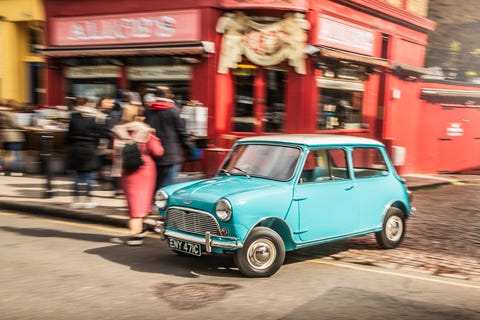

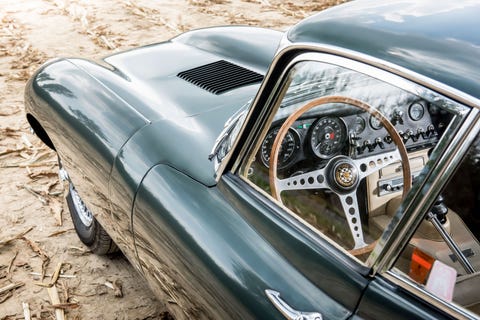
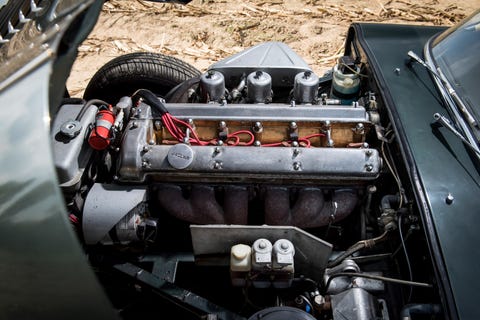
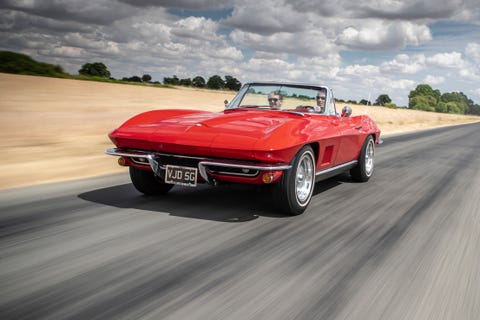
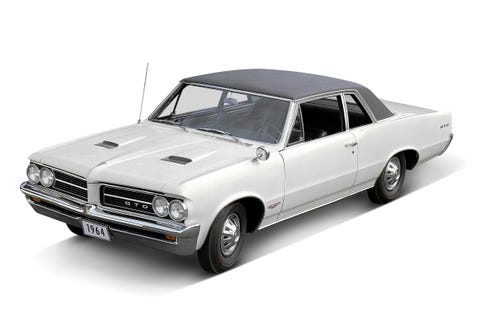
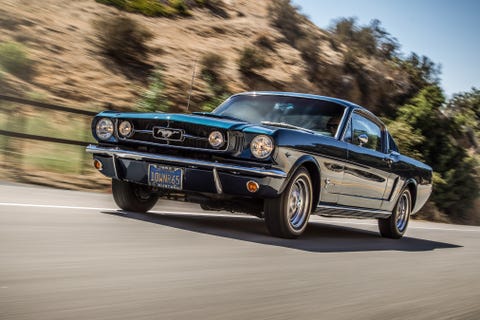
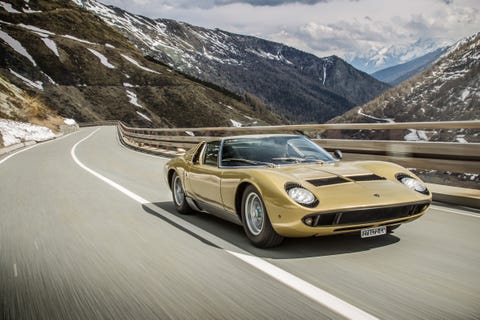
0 Response to "Old Fashioned Car Popular 1960's Cars"
Post a Comment